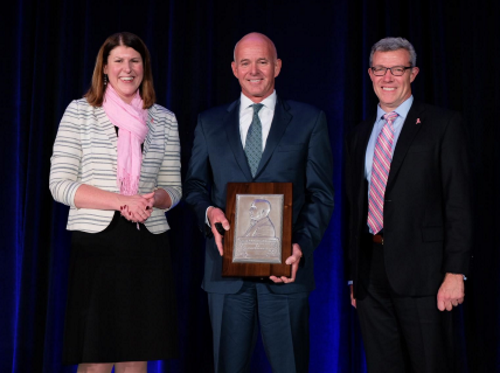Since supply chains serve as the “lifeblood” of America, state departments of transportation are being called upon to expand their role in improving freight connectivity across the country.
“One of the things we always talked about in the military is that while you can never win a war with logistics, you can certainly lose a war without logistics,” explained Luke Reiner, director of the Wyoming Department of Transportation and a retired Major General with the Wyoming National Guard.

Reiner serves as the chair of the Special Committee on Freight for the American Association of State Highway and Transportation Officials. During a panel discussion at the association’s annual meeting in San Diego, Reiner – who attended the meeting virtually – stressed that the supply chain “supports everyday life and supports everything we do” in America. “As a result, the state DOT touchpoints we have are critical and are very real where the supply chain is concerned.”
Caroline Mays – the committee’s vice chair and director of the freight, trade, and connectivity section within the Texas Department of Transportation – stressed that state DOTs need to expand the role they play in the nation’s freight system.

“We have to ask ourselves several questions,” she said. “What can state DOTs do for movement of freight and how can we adapt and innovate to solve mobility and equity issues within the country’s supply chain? How do we help our leaders make decisions on freight issues and the direction of transportation as a whole? What action can we take now and in the future as we update state freight plans? And what will those changes look like?”
Mays noted that state DOTs also need to reinforce and expand their partnerships both in government and in the private sector as they work to improve freight flows across the United States.
“We also need to think outside the box and examine what new partnerships we need to build in order to deal with supply chain challenges we are facing,” she added.
[Editor’s note: AASHTO made similar arguments in a 21-page letter sent to the U.S. Department of Transportation on October 18 containing advice on how to improve the nation’s supply chains and transportation industrial base.]
Stephen O’Connor, chief of the freight rail policy division at the Federal Railroad Administration, provided a snapshot of the size and scope of the freight backlog now affecting the nation via a virtual update during the freight committee session.

“There are 71 container ships waiting outside port of Los Angeles and 23 waiting outside of Port of Savannah,” he said. “By contrast there are 11 container ships waiting outside all of the other East Coast ports combined. That gives you an idea of the supply chain issues we are dealing with.”
That’s why Caitlin Hughes – director of the office of freight management and operations for the Federal Highway Administration – noted that her agency is encouraging state DOT freight plans to become “more comprehensive,” wrapping in metropolitan planning organization or MPOs and private sector freight stakeholders.
“Over 40 states now have state freight advisory committees,” she noted in a virtual presentation during the committee meeting.
“Even if you are not a port state, we encourage you to incorporate port issues into those plans – considering the needs of inland ports and the throughput of freight from ports throughout through the country as well,” Hughes said. “We hope state DOTs keep the scope broad on freight issues at the state level.”
 AASHTO Annual Meeting
AASHTO Annual Meeting


